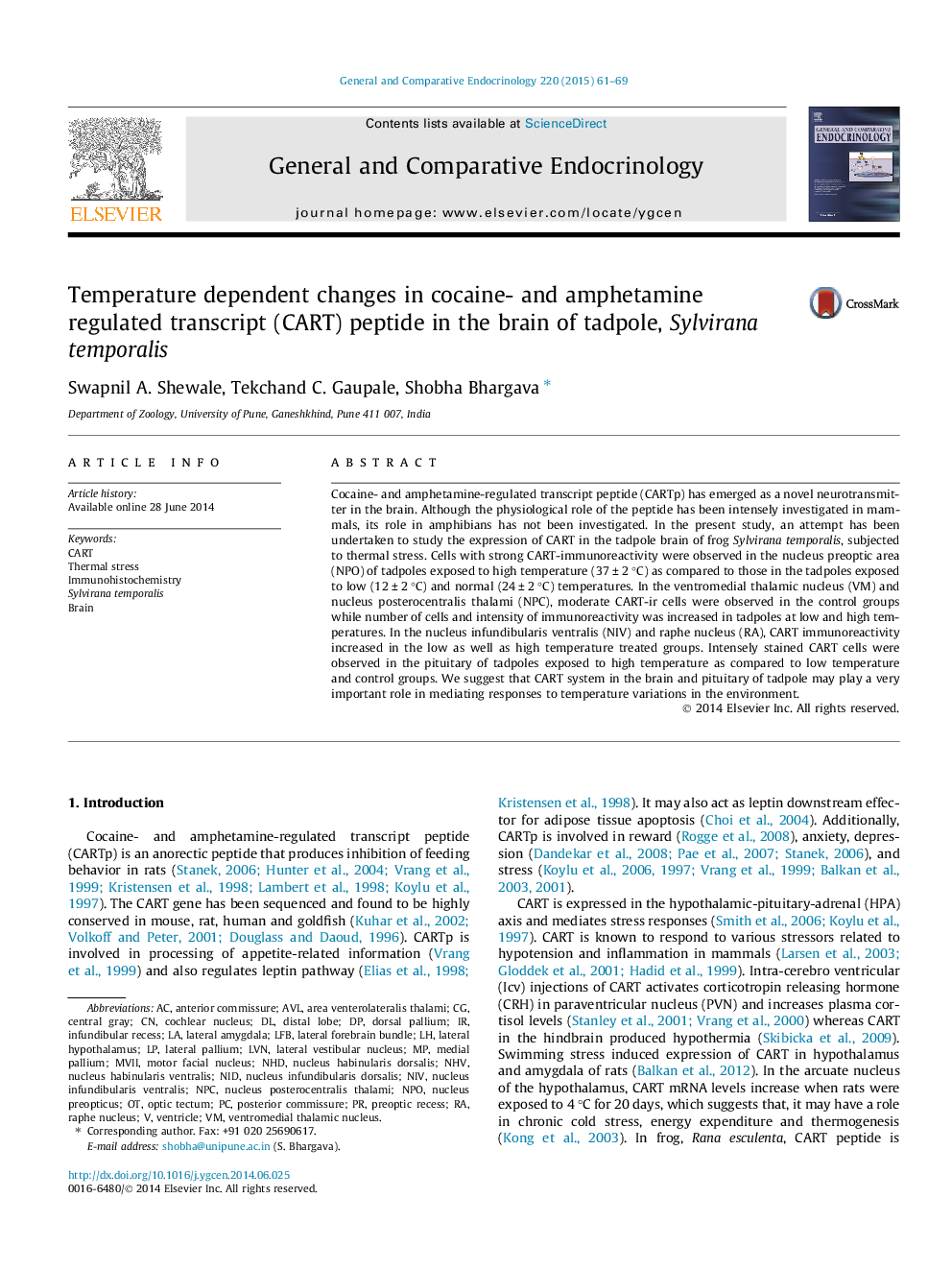| Article ID | Journal | Published Year | Pages | File Type |
|---|---|---|---|---|
| 2799941 | General and Comparative Endocrinology | 2015 | 9 Pages |
•Anuran as a model to probe the central adaptive mechanisms in response to stress.•CART in the CNS may play a role in mediating thermal stress responses.•CART mediates cognitive, neuroendocrine and stress related processes in ectotherms.
Cocaine- and amphetamine-regulated transcript peptide (CARTp) has emerged as a novel neurotransmitter in the brain. Although the physiological role of the peptide has been intensely investigated in mammals, its role in amphibians has not been investigated. In the present study, an attempt has been undertaken to study the expression of CART in the tadpole brain of frog Sylvirana temporalis, subjected to thermal stress. Cells with strong CART-immunoreactivity were observed in the nucleus preoptic area (NPO) of tadpoles exposed to high temperature (37 ± 2 °C) as compared to those in the tadpoles exposed to low (12 ± 2 °C) and normal (24 ± 2 °C) temperatures. In the ventromedial thalamic nucleus (VM) and nucleus posterocentralis thalami (NPC), moderate CART-ir cells were observed in the control groups while number of cells and intensity of immunoreactivity was increased in tadpoles at low and high temperatures. In the nucleus infundibularis ventralis (NIV) and raphe nucleus (RA), CART immunoreactivity increased in the low as well as high temperature treated groups. Intensely stained CART cells were observed in the pituitary of tadpoles exposed to high temperature as compared to low temperature and control groups. We suggest that CART system in the brain and pituitary of tadpole may play a very important role in mediating responses to temperature variations in the environment.
